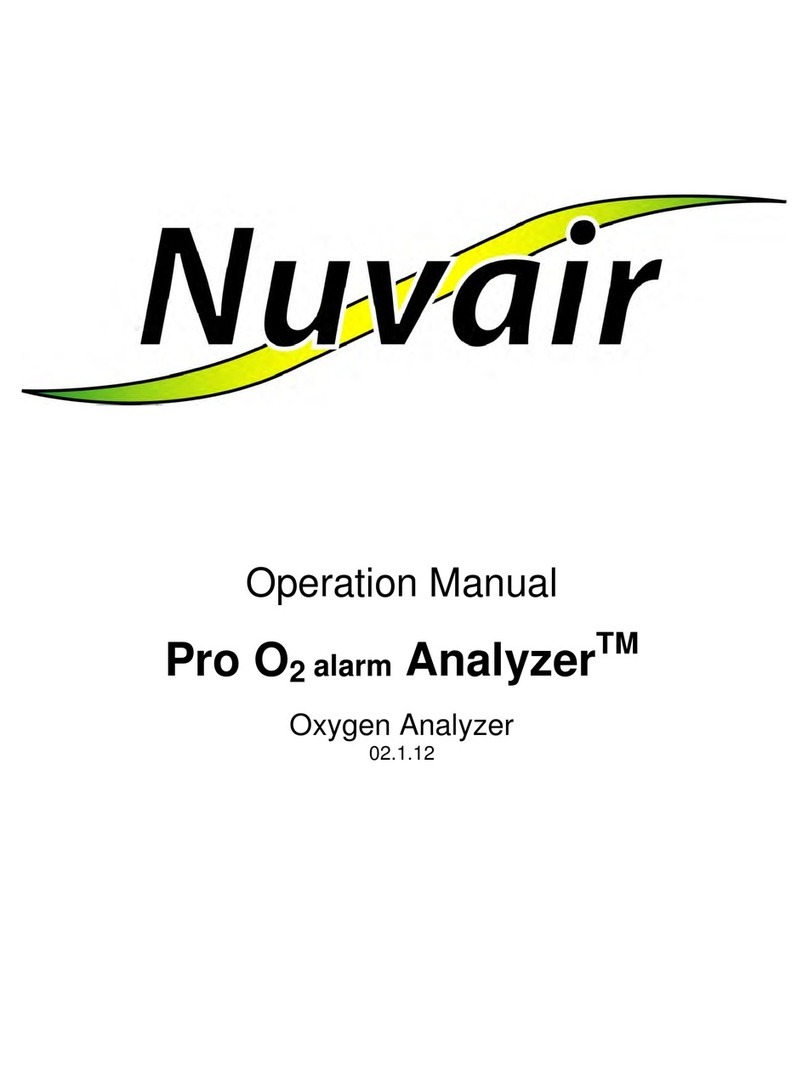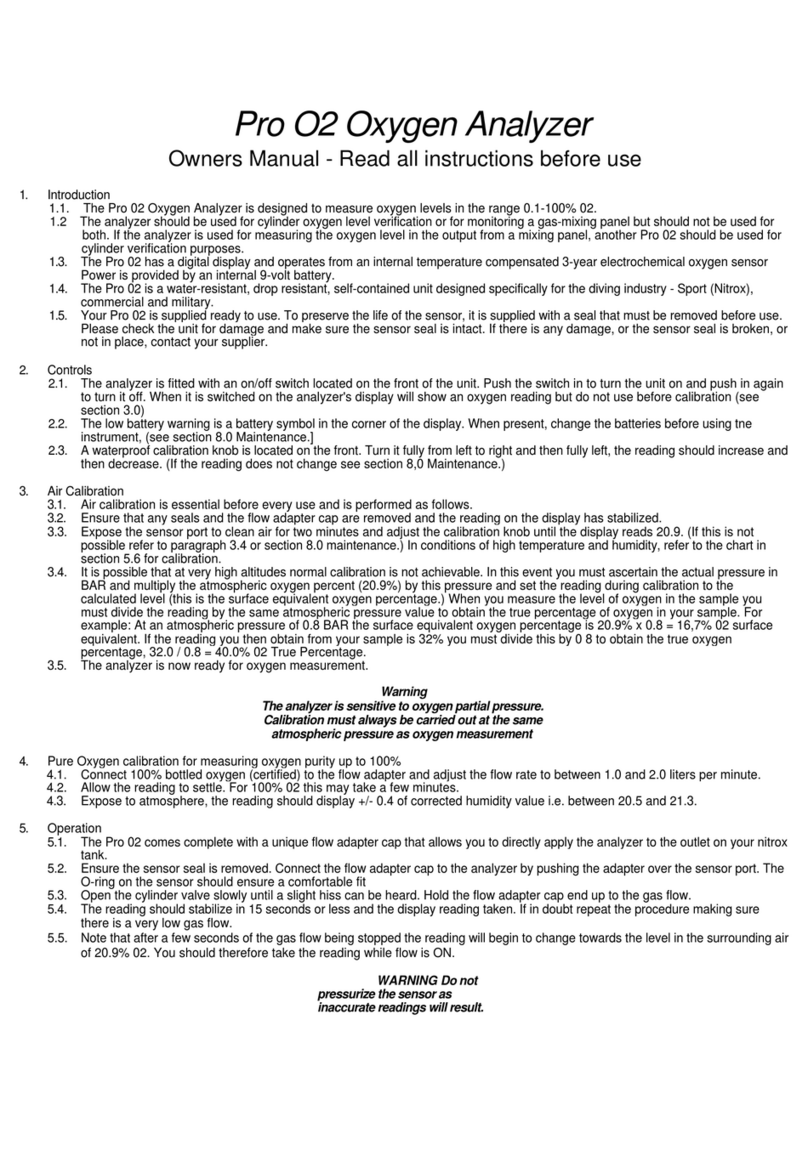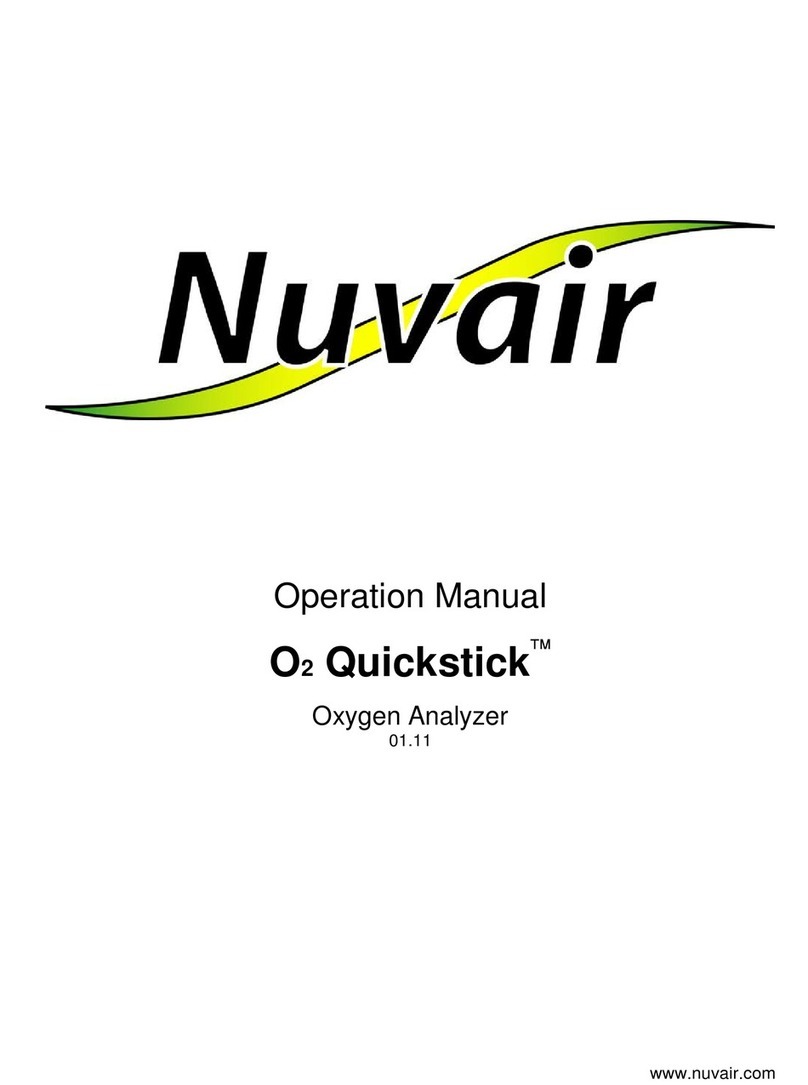
Pro Trio Analyzer Manual
Page 3
NUVAIR www.nuvair.com
Table of Contents
Introduction ................................................................................................................................................5
1.0 System Description .......................................................................................................................6
1.1 Identification of Analyzer Components...........................................................................................7
2.0 Individual Specifications of the Analyzers..............................................................................9
2.1 Oxygen Sensor:................................................................................................................................9
2.1 Carbon Monoxide Sensor:...............................................................................................................9
2.2 Carbon Dioxide Sensor: ...................................................................................................................9
3.0 Requirements for Operation of Analyzer Trio......................................................................10
3.1 Gas Flow ........................................................................................................................................10
3.2 AC Power .......................................................................................................................................10
3.3 Gas Sensors....................................................................................................................................10
4.0 Calibration......................................................................................................................................11
5.0 Operation of Analyzer Trio ........................................................................................................12
5.1 Turning on Analyzers:....................................................................................................................12
5.2 Threshold Alarms...........................................................................................................................14
Each Analyzer has independent threshold alarms that are user programmable....................................14
5.3 Powering off ..................................................................................................................................14
Hold down the On/Off button for a couple of seconds on each of the analyzers in the Analyzer Trio.
The Analyzer will display “OFF” and then go blank. ................................................................................14
6.0 Factory Reset................................................................................................................................14
7.0 Maintenance ..................................................................................................................................15
7.1 Analyzer Care.................................................................................................................................15
7.2 Battery Replacement.....................................................................................................................16
7.3 Sensor Replacement......................................................................................................................16
8.0 Programming of the Analyzers in the Analyzer Trio ..........................................................16
9.0 Pro O2Alarm Analyzer................................................................................................................17
9.1 Pro O2 Analyzer Controls ...............................................................................................................18
9.2 O2Analyzer Alarm .........................................................................................................................18
9.3 O2Analyzer Sensor ........................................................................................................................18
9.4 Pro O2Calibration Methods ..........................................................................................................19
9.5 Pro O2 Analyzer Operation............................................................................................................20
9.6 Programming Procedures..............................................................................................................21
9.7 Alarm Setting (AL 1 & Al 2) ...........................................................................................................22
9.8 Full Scale Value Setting (FSC) ........................................................................................................22
9.9 Calibration Oxygen Value (O2c) ....................................................................................................22
9.10 Threshold Alarms.......................................................................................................................23
9.11 Powering on and warming up....................................................................................................23
9.12 Powering Off ..............................................................................................................................24
9.13 Factory Reset .............................................................................................................................24
10.0 Pro CO2Carbon Dioxide Analyzer .......................................................................................24
10.1 Pro CO2Controls ........................................................................................................................25
10.2 Pro CO2Display ..........................................................................................................................25
10.3 Pro CO2Alarm ............................................................................................................................26
10.4 Pro CO2Sensor...........................................................................................................................26
10.5 Pro CO2Calibration ....................................................................................................................26
10.6 Pro CO2Operation .....................................................................................................................27






























